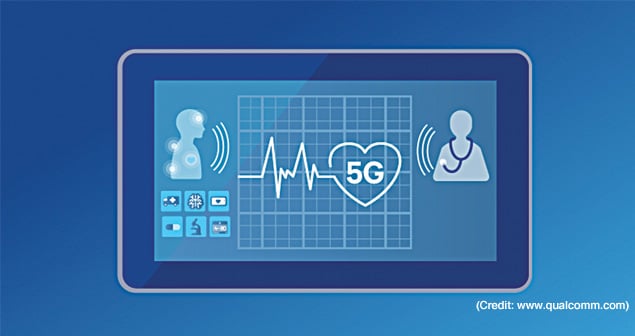- Contact Us
- +91-98111-55335
- [email protected]

Latest technology in space race: Satellite IoT
May 8, 2020
Exploring The Applications Of IoT
May 8, 2020What impact will 5G have on healthcare?

With the introduction of 5G network in healthcare sector, more patients are being treated at the same time. 5G helps providers in giving improved care to patients outside hospitals and clinics through high-quality real-time video
4G, the current standard of cellular technology, is nearly five hundred times faster compared to 3G due to which applications such as high definition TV on mobile and video conferencing could be possible. However, due to an increasing number of users sharing the available capacity, actual speed experiences are much lower. It is applicable in both situations—when the device is stationary and non-stationary. As this network of users grows further and the Internet of Things (IoT) applications increase, the connected devices will increase to such an extent that 4G would not be able to support them.
5G New Radio (NR), the generation succeeding 4G, comes with a wider bandwidth to allow these devices to connect to the network. Additionally, multiple data streams can be transmitted without much interference. Speed is ten to a hundred times faster compared to the current standard. Their ultra-low latency means that there is a reduction in time taken for data to travel from sender to receiver.
These features make 5G suitable for mission-critical applications that require high reliability. In healthcare sector, 76 billion dollars revenue opportunity is expected in 2026 for operators addressing transformation with 5G, according to Ericsson’s report titled The 5G Business Potential.
Whenever there is a need for medical attention, patients need to visit a doctor which can be troublesome. If the doctor is not in the vicinity, like in rural areas, it can consume a lot of time and be life-threatening. Even when the patients reach, they have to wait for treatment as an analysis of their health status takes time. 5G enables fast download and upload speeds for quick and reliable transmission of massive files consisting of medical imagery generated by MRIs and other bandwidth-intensive imaging equipment to remote specialists. This also allows more patients to be treated in the same period. Veterans Affairs hospital in California is among the first 5G-enabled health facilities. While the work is not complete, some of the portions have become operational.
5G networks can help providers in giving improved care to patients outside hospitals and clinics. Real-time data is necessary to make quick decisions which require high speed and low latency. Telemedicine appointments through high-quality real-time video allow healthcare professionals to collaborate with patients as well as each other with ease. In partnership with Barcelona’s San Raffaele hospital, Vodafone has developed 5G ambulances for paramedics so that they can stream real-time HD video support from remote specialists while transporting patients. Preventive routine and post-operative care can be done by remotely monitoring patients through IoT devices like wearables and gathering necessary data related to medications and vital signs. This improves the patient’s engagement with their health and reduces hospital expenses, which is highly beneficial for chronic ailments.
The use of futuristic and emerging technologies for better treatment is also possible with 5G. AT&T is working with VITAS Healthcare to study the effects of augmented reality (AR) and virtual reality (VR) for hospice patients. Artificial intelligence (AI) requires rapid learning in real-time from large amounts of datasets. 5G makes it possible to utilise AI tools anytime and anywhere. Even a successful remote robotic surgery procedure was attainable with a 5G network in China last year. The surgeon placed a brain stimulation device in a patient with Parkinson’s disease while being nearly 3,000 kilometres away.
The commercial rollout of this technology is slowly growing in different countries globally. But there are numerous roadblocks for this large-scale transition to be possible. The signals are unreliable over long distances and can be easily disrupted by obstacles which do not have much impact on 4G. This requires a dense network of cells to be effective. Also, smartphones need to be 5G compatible. These costs and requirements become a matter of concern at a time when telecom operators are dealing with the burden of turning a growing demand for mobile data services into revenue growth already.
5G services have not been rolled out in India yet. Sandeep Aggarwal, chairman, PhD Chamber of Commerce and Industry, says, “While auctions should be held at the earliest, a lot of things need to be kept in mind. We need to look at whether 4G itself has been used to full capacity, and need to keep in mind that 5G standards have not been set.”
—Ayushee Sharma
